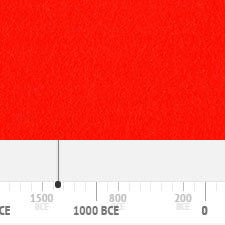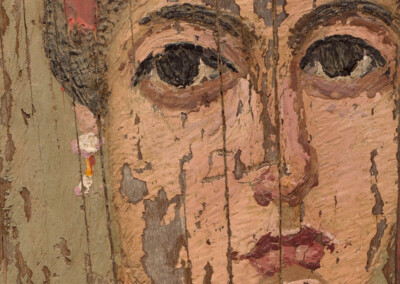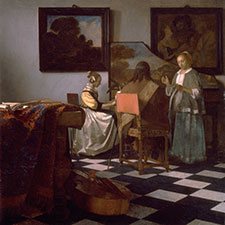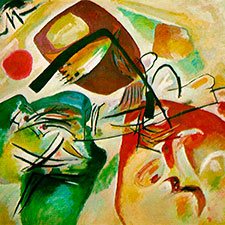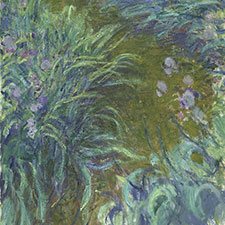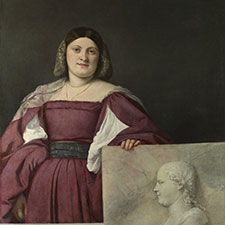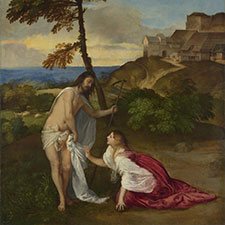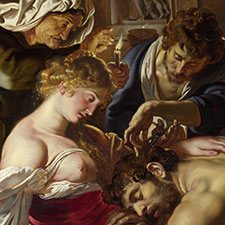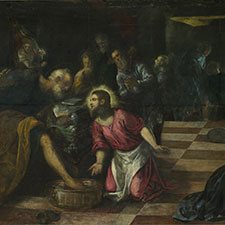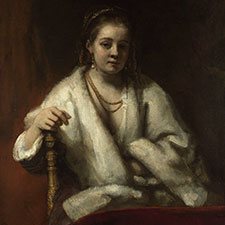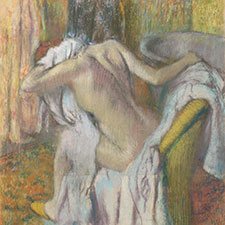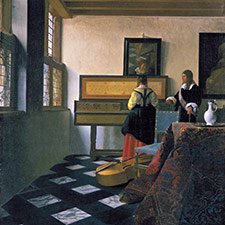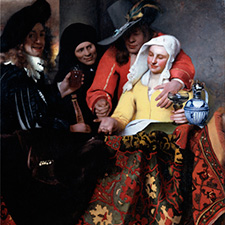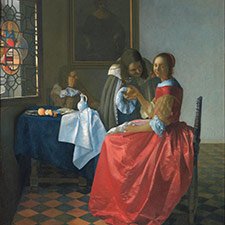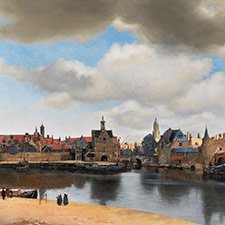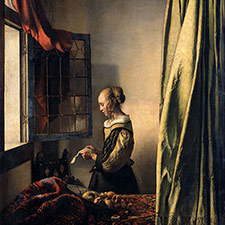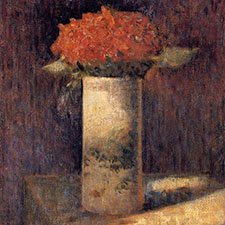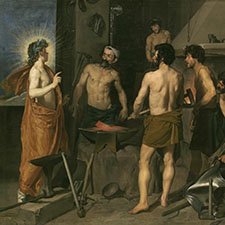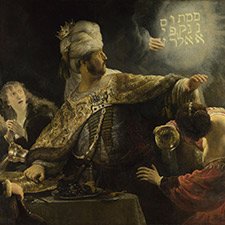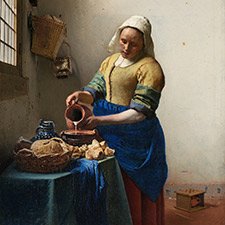Madder Lake
Natural organic pigmentComposition and Properties of Madder Lake
The main coloring agents in the roots of the madder plant are alizarin, purpurin, and pseudo purpurin. All of them are derivatives of anthraquinone.
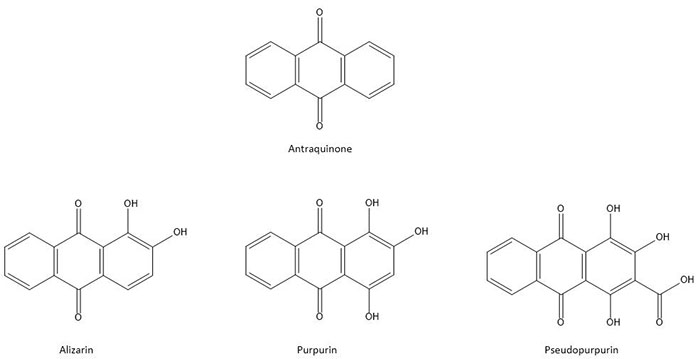
The colorants are bound to inorganic substrates such as aluminum hydroxide or calcium carbonate.
The chemical stability of all colorants contained in madder lake is not very high and it cannot be used in fresco. Red lakes containing alizarin and pseudo purpurin show very good lightfastness, whereas lakes containing purpurin are much less stable. As purpurine is contained in madder, these lakes are not stable to light. There are no known incompatibilities with other pigments. Mixing madder lake with lead white prevents its cracking.
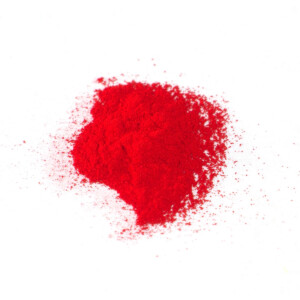
Pigment

Painted swatch
References
(1) Burnstock, Aviva, Ibby Lanfear, Klaas Jan van den Berg, Leslie Carlyle, Mark Clarke, Ella Hendriks, and Jo Kirby. “Comparison of the Fading and Surface Deterioration of Red Lake Pigments in Six Paintings by Vincent van Gogh with Artificially Aged Paint Reconstructions.” In ICOM-CC 14th Triennial Meeting Preprints, The Hague, 2005 (1): 459–66.
(2) Saunders, David, and Jo Kirby. “Light-Induced Colour Changes in Red and Yellow Lake Pigments.” In National Gallery Technical Bulletin 15 (1994): 79–97. Available as pdf.
Names
Alternative names
Rubia
Color Index
Madder: Natural red 9 (NR 9)
C.I. 75330; 75420
Word origin
From Old English mædere and Old Norse maðra, from Proto-Indo-European modhro– “dye plant” (source also of Old High German matara “madder,” Polish modry, Czech modry “blue”).
From Online Etymology Dictionary
Krapplack
German
Laque de garance
French
Lacca di robia
Italian
Laca de rubia
Spanish
Preparation
Preparation of the natural pigment from madder roots according to a 19th-century recipe
Boil 1 part of madder in from 12 to 15 pints of water, and continue the ebullition till it be reduced to about 2 lbs. Then strain the decoction through a piece of strong linen cloth, which must be well squeezed; and add to the decoction 4 oz. of alum. The tint will be a beautiful bright red, which the matter will retain if it be mixed with proper clay. In this case, expose the thick liquor which is thus produced on a linen filter, and subject it to one washing, to remove the alum. The lake, when taken from the driers, will retain this bright primitive color given by the alum.
Madder plant, Rubia tinctorum
From Köhlers Medizinalpflanzen
Video: 'Genuine Madder Lake Pigment extraction.' by The Alchemical Arts
Preparation of Alizarine Lake in the Lab
Nowadays, red lakes can be prepared from synthetic alizarin or purpurin. Here is one contemporary recipe for an alizarin lake.
10 g aluminum sulfate Al2(SO4)3 is dissolved in 100 ml deionized water at 60°C and treated with a solution of 5 g anhydrous sodium carbonate Na2CO3 in 10 ml deionized water.
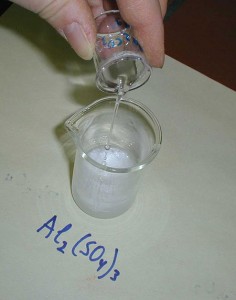
The precipitated aluminum hydroxide is rinsed once with water and placed in a 200 ml beaker.

To this hydroxide is added in sequence a solution of 2 g sodium phosphate Na3PO4 in 20 ml deionized water, 3 g calcium chloride CaCl2 in 30 ml deionized water and a paste of 20 g alizarin mixed with 4 g of sulfated castor oil (Turkey red oil, a surfactant) and 20 ml of deionized water.

The mixture is diluted to 500 ml with deionized water and boiled for 6 hours with replenishment of water.
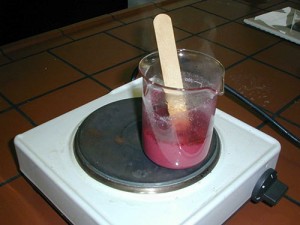
References
(1) Kirby, J., Spring, M., Higgitt, C. ‘The Technology of Red Lake Pigment Manufacture: Study of the Dyestuff Substrate‘. National Gallery Technical Bulletin Vol 26, pp 71–87.
(2) Vincent Daniels, Thibaut Devièse, Marei Hacke and Catherine Higgitt, Technological insights into madder pigment production in antiquity, British Museum Technical Research Bulletin, Vol 8, 2014, p. 13 – 28.
History of Use
Madder has been used since antiquity for dyeing textile materials and in paintings as well. The following graph gives the frequency of its use from the 14th till the 19th century in the paintings of the Schack Collection in the Bavarian State Art Collections in Munich (1).

References
(1) Kühn, H., Die Pigmente in den Gemälden der Schack-Galerie, in: Bayerische Staatsgemäldesammlungen (Ed.) Schack-Galerie (Gemäldekataloge Bd. II), München 1969.
(2) Chenciner, Robert, Madder Red: A History of Luxury and Trade, Routledge, 2003
(3) Vincent Daniels, Thibaut Devièse, Marei Hacke and Catherine Higgitt, Technological insights into madder pigment production in antiquity, British Museum Technical Research Bulletin, Vol 8, 2014, p. 13 – 28.
Examples of use
Johannes Vermeer, Christ in the House of Martha and Mary, 1654-56
Johannes Vermeer, The Girl with a Wine Glass, 1658-59
Identification
Fiber optics reflectance spectra (FORS)

Spectra by A. Cosentino, Cultural Heritage Science Open Source (CHSOS)
IR Spectrum
IR-Spectra of alizarin: NIST (National Institute of Standards and Technology)
Raman Spectrum

Pozzi et al. Heritage Science 2013 1:23 doi:10.1186/2050-7445-1-23
X-Ray Fluorescence Spektrum (XRF)
XRF Spectrum in the Free XRF Spectroscopy Database of Pigments Checker, CHSOS website.
References
(1) A. Nevin, et al., Advances in the analysis of red lake pigments from 15th and16th c. paintings using fluorescence and Raman spectroscopy, Int. Conf. on non-destructive investigations and microanalysis for the diagnostics and conservation of cultural and environmental heritage (ART 2011), 13-15 April 2011, Florence, Italy
(2) Pozzi, F., van den Berg, K. J., Fiedler, I. and Casadio, F. (2014), A systematic analysis of red lake pigments in French Impressionist and Post-Impressionist paintings by surface-enhanced Raman spectroscopy (SERS). J. Raman Spectrosc.. doi: 10.1002/jrs.4483
(3) Kirby, jo, Spring, Marika and Higgitt, C. The Technology of Red Lake Pigment Manufacture: Study of the Dyestuff Substrate. National Gallery Bulletin, Vol. 26, 2005.
(4) Christina Bisulca, Marcello Picollo, Mauro Bacci, Diane Kunzelman, UV-VIS-NIR Reflectance Spectroscopy
of Red Lakes In Paintings, 9th International Conference on NDT of Art, Jerusalem Israel, 25-30 May 2008. Available as pdf.
(5) Whitney, A. V., et al. An innovative surface-enhanced Raman spectroscopy (SERS) method for the identification of six historical red lakes and dyestuffs. Journal of Raman Spectroscopy 37(10), 2006, 993–1002. Available as pdf.
(6) Jo Kirby and Raymond White, The Identification of Red Lake Pigment Dyestuffs and a Discussion of their Use. National Gallery Technical Bulletin, Vol 17, 1996, pp. 56-80.
(7) Catherine M. Schmidt, Karen A. Trentelman, 1064 nm Dispersive Raman Micro-Spectroscopy For the In-situ Identification of Organic Red Colorants, e-Preservation Science, e-PS, 2009, 6, 10-21. Available as pdf.

Microphotograph
image © Volker Emrath
Further Reading
References
(1) Schweppe, H. and Winter, J., Madder and Alizarin, in Artists’ Pigments. A Handbook of Their History and Characteristics, Vol. 3: FitzHugh, E.W. (Ed.) Oxford University Press 1997, p. 109 – 142. Available as pdf from the National Gallery of Art.
(2) J. Kirby, M. Spring and C. Higgitt, The Technology of Eighteenth- and Nineteenth-Century Red Lake Pigments, National Gallery Technical Bulletin, Vol 28, 2007.
(3) J. Kirby and R. White, The Identification of Red Lake Pigment Dyestuffs and a Discussion of their Use, National Gallery Technical Bulletin, Vol. 17, (1996), pp. 56-80. Available as pdf.
(4) Kirby, J., Spring, M., Higgitt, C. ‘The Technology of Red Lake Pigment Manufacture: Study of the Dyestuff Substrate‘. National Gallery Technical Bulletin Vol 26, pp 71–87
(5) Chenciner, R., Madder Red: A History of Luxury and Trade, Routledge 2003.
(6) S. Muntwyler, J. Lipscher, HP. Schneider, Das Farbenbuch, 2nd. Ed., 2023, alataverlag Elsau, pp. 134-137.






